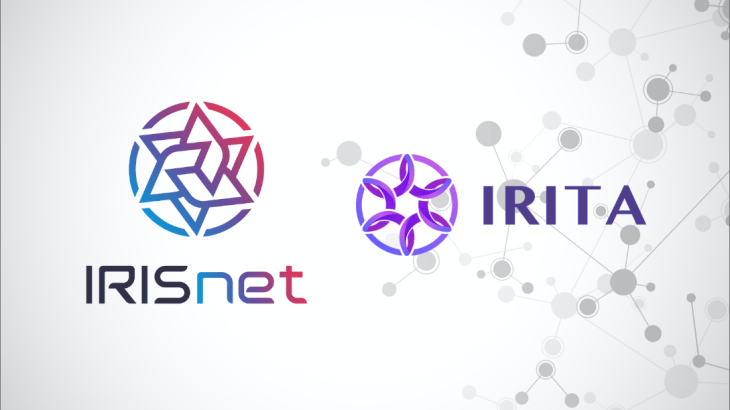
はじめに
CordaのFlowを書くにはState, Contract, Command, Transactionなど様々なCordaの基本概念を理解している必要があります。また、Flowのコードには様々なクラスが出てくるので、最初のうちは難解に感じるところがあります。
この記事では難解なコードの概要を理解するため、APIの詳細には触れず全体像からコードの大きな流れを解説します。
CordaのFlowの流れ
詳細はあとで説明しますが、Flow全体の流れは以下のようになります。

今回読んでみるコード
AさんからBさんにオンラインクーポンを送るFlowを例に解説していきます。
@InitiatingFlow
@StartableByRPC
class InitiatorFlow(
private val inputId: UniqueIdentifier,
private val newOwner: Party
) : FlowLogic<SignedTransaction>() {
@Suspendable
override fun call(): SignedTransaction {
/* Query input state */
val query = QueryCriteria.LinearStateQueryCriteria(linearId = listOf(inputId))
val inputStateRef =
serviceHub.vaultService.queryBy(CouponState::class.java, query).states.single()
val notary = inputStateRef.state.notary
/* Start building transaction */
val txBuilder = TransactionBuilder(notary)
/* Add input */
txBuilder.addInputState(inputStateRef)
/* Add output */
val inputData = inputStateRef.state.data
val outputState = inputData.copy(owner = newOwner)
txBuilder.addOutputState(outputState)
/* Add command */
val txCommand =
Command(
Send(),
inputData.participants.map { it.owningKey }
)
txBuilder.addCommand(txCommand)
/* Verify */
txBuilder.verify(serviceHub) // Verifies this transaction and runs contract code. At this stage it is assumed that signatures have already been verified.
/* Sign by initiator(A)*/
val partSignedTx = serviceHub.signInitialTransaction(txBuilder)
/* Create session with B */
val otherPartySession = initiateFlow(newOwner)
/* Collect sign from B */
val fullySignedTx =
subFlow(CollectSignaturesFlow(partSignedTx, setOf(otherPartySession)))
/* Finalize and Record transaction */
return subFlow(FinalityFlow(fullySignedTx, setOf(otherPartySession)))
}
}
@InitiatedBy(InitiatorFlow::class)
class ResponderFlow(val otherPartySession: FlowSession) : FlowLogic<SignedTransaction>() {
@Suspendable
override fun call(): SignedTransaction {
val signTransactionFlow = object : SignTransactionFlow(otherPartySession) {
override fun checkTransaction(stx: SignedTransaction) = requireThat {
/* Verification Logic */
}
}
val txId = subFlow(signTransactionFlow).id
return subFlow(ReceiveFinalityFlow(otherPartySession, expectedTxId = txId))
}
}
Transaction生成の流れ
FlowはTransactionを作成し実行するためにあります。Transaction構築の流れは大きくは以下の通りです。
- Transactionを構築する
- Transactionを検証し署名を集める
- Transactionを関係者間で記録する

各ステップごとに見ていきましょう。
1.トランザクション構築
Transactionの構成要素は全部で次の6つです。
- 0個以上のInputState
- 0個以上のOutputState
- 0個以上のReference Input State
- 1個以上のCommand
- 0個以上のアタッチメント
- 1個以下のタイムウィンドウ
上記のうち、特に重要なのがInputState, OutputState, Commandの3点です(その他は補助的な機能となるので今回は説明を割愛します)。
Transactionは特定の状態(InputState)を消費して、新しい状態(OutputState)を生成するために実行されます。そして、その消費アクションの意図を示すものがCommandです。
オンラインクーポンを送るFlowの場合、具体的には以下のようなInputState, OutputState, Commandになります。
- InputState(特定の状態):Aさんが所持するオンラインクーポン100円
- OutputState(新しい状態):Bさんが所持するオンラインクーポン100円
- Command:送金コマンド
InputStateとOutputStateは、それぞれのクラスが定義された時点でContractに紐付けられます。Contractは明示的にTransactionに含めずとも、それぞれのStateの紐付きから全てのContractがそれぞれ呼び出されることになります。
またContractは、Commandの種類に応じて事前に指定されたロジックにより、Stateの内容を検証します。
トランザクション構築のコードを見てみる
InputState, OutputState, Commandを指定している部分が以下のコードとなります。
InputStateを基準として使用するNotaryやOutputStateが決まるので、まずはInputStateを検索するところから始まります。
次にTransactionを生成するためのObject(TransactionBuilder)を生成し、InputとOutputとCommandを付与しています。
/* Query input state */
val query = QueryCriteria.LinearStateQueryCriteria(linearId = listOf(inputId))
val inputStateRef =
serviceHub.vaultService.queryBy(CouponState::class.java, query).states.single()
val notary = inputStateRef.state.notary
/* Start building transaction */
val txBuilder = TransactionBuilder(notary)
/* Add input */
txBuilder.addInputState(inputStateRef)
/* Add output */
val inputData = inputStateRef.state.data
val outputState = inputData.copy(owner = newOwner)
txBuilder.addOutputState(outputState)
/* Add command */
val txCommand =
Command(
Send(),
inputData.participants.map { it.owningKey }
)
txBuilder.addCommand(txCommand)
2.Transactionの署名
Transactionの署名は以下の手順で行われます。
- 自分による検証と署名
- 関係者による検証
- 関係者による署名
Transactionの署名のコードを見てみる
Transactionの署名のコードを見てみましょう。
InitiatorFlow
/* Verify */
txBuilder.verify(serviceHub) // Verifies this transaction and runs contract code. At this stage it is assumed that signatures have already been verified.
/* Sign by initiator(A)*/
val partSignedTx = serviceHub.signInitialTransaction(txBuilder)
/* Create session with B */
val otherPartySession = initiateFlow(newOwner)
/* Collect sign from B */
val fullySignedTx =
subFlow(CollectSignaturesFlow(partSignedTx, setOf(otherPartySession)))
ResponderFlow
@InitiatedBy(InitiatorFlow::class)
class ResponderFlow(val otherPartySession: FlowSession) : FlowLogic<SignedTransaction>() {
@Suspendable
override fun call(): SignedTransaction {
/* SignTransactionFlow is called in response to CollectSignaturesFlow */
val signTransactionFlow = object : SignTransactionFlow(otherPartySession) {
override fun checkTransaction(stx: SignedTransaction) = requireThat {
/* Verification Logic */
}
}
val txId = subFlow(signTransactionFlow).id
return subFlow(ReceiveFinalityFlow(otherPartySession, expectedTxId = txId))
}
}
上記のコードを理解するためには、Session, InitiatorFlow, ResponderFlowとSubFlowの理解が必要になるので、それぞれ説明していきます。
Session
initiateFlowによって特定の当事者と通信するためのSessionオブジェクトが作成されます。Sessionオブジェクト作成時点ではまだ通信は行われず、後のSubFlowをSessionオブジェクトに対して実行することで通信が開始されます。
InitiatorFlowとResponderFlow
Flowは呼び出し側のInitiatorFlowとFlowにレスポンスするResponderFlowがペアで定義されます。@InitiatedByによってInitiatorとペアとなるResponderが指定されています。
SubFlow
SubFlowはFlowの中からさらに呼び出される子のFlowです。SubFlowにも、呼び出し側とペアとなるSubFlowが定義されています。以下のSubFlowペアは事前にCordaで定義されているものです。
- CollectSignaturesFlow/SignTransactionFlow
- FinalityFlow/ReceiveFinalityFlow
CollectSignaturesFlow/SignTransactionFlowは署名のリクエストと検証のペアで、FinalityFlow/ReceiveFinalityFlowはトランザクションをNotarizeして記録するためのFlowです。
CollectSignaturesFlow/SignTransactionFlow
CollectSignaturesFlowを実行したタイミングで、ResponderFlowのCallと対応するSignTransactionFlow.checkTransactionが実行され、Flowの内容が検証されます。またこのタイミングで自動的にContractも実行され、検証されることになります。
3.Transactionの記録
Flow最後のステップはTransactionの記録です。必要な関係者すべてからの署名が集まったら、最後にTransactionが記録されます。
Transactionの記録のコードを見てみる
FinalityFlow/ReceiveFinalityFlowのペアによってNotarizeされ、関係者のLedgerにTransactionとStateが記録されます。
FinalityFlowとReceiveFinalityFlowの実行順序は、先にReceiveFinalityFlowが実行されてFinalityFlowを待ち受ける形になります。
InitiatorFlow
return subFlow(FinalityFlow(fullySignedTx, setOf(otherPartySession)))
ResponderFlow
@InitiatedBy(InitiatorFlow::class)
class ResponderFlow(val otherPartySession: FlowSession) : FlowLogic<SignedTransaction>() {
@Suspendable
override fun call(): SignedTransaction {
...
return subFlow(ReceiveFinalityFlow(otherPartySession, expectedTxId = txId))
}
}
あらためてFlowのコード全体をおさらいしてみましょう。最初に見たときに比べて理解できるようになっているはずです。
関連記事
CordaのFlowの役割については別の記事で解説しています。こちらも併せてご覧ください。






